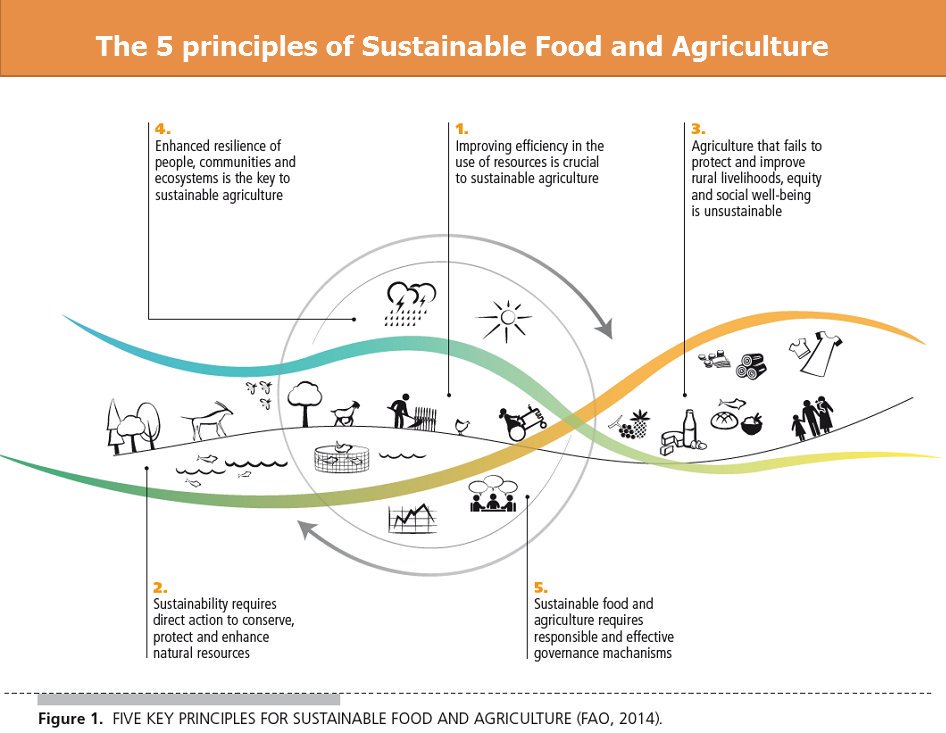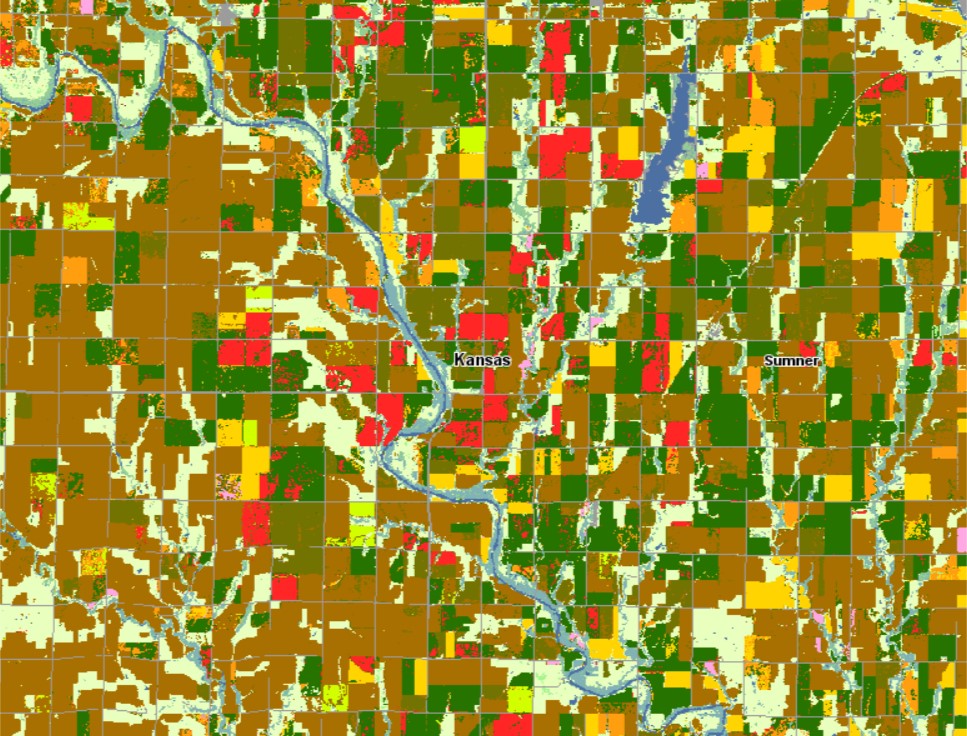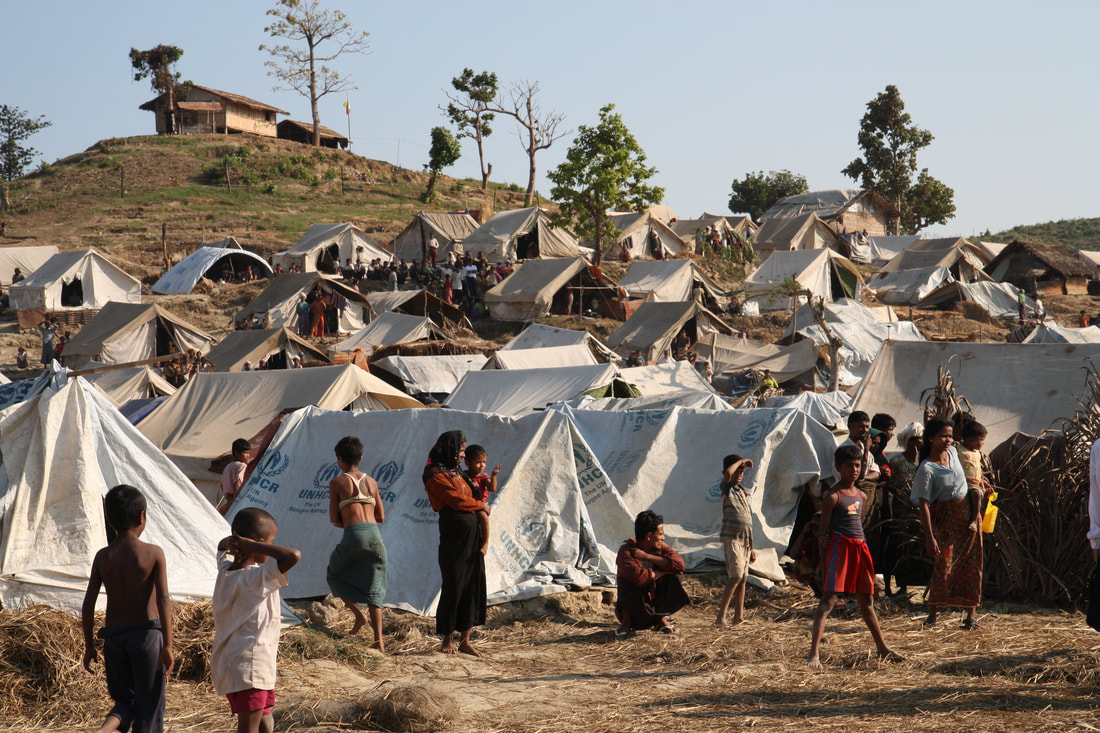FOOD SYSTEMS AND SUSTAINABILITY
|
Sustainable food systems aim to provide sufficient and nutritious food while maximizing climate resilience and minimizing resource demands and negative environmental impacts. Historical practices, notably the Green Revolution, prioritized the single objective to maximize production over other nutritional and environmental dimensions. The Davis lab seeks to quantify and assess multiple indicators of sustainability that may be relevant to decision-makers and to utilize these measure to evaluate the multidimensional outcomes (including those related to nutrition, climate resilience, livelihoods, and the environmental) of current or intended sustainability or food security policies. National and state-level strategies that consider multiple objectives in decisions about food production can move beyond many of the shortcomings of the Green Revolution while reinforcing the benefits. This ability to realistically incorporate multiple dimensions into intervention planning and implementation is the crux of sustainable food production systems worldwide.
|
CROP AND IRRIGATION MAPPING
|
The ever-growing constellation of satellites that circle Earth are allowing humanity to observe the planet in unprecedented detail and to understand how humans interact with and modify natural systems from local to global scales. The expansion and modernization of agriculture have permitted a rapid rise in global food supplies and avoided widespread hunger and famine. But at the same time, agriculture has become one of the most extensive ways by which humanity has altered the planet. In particular, the production of food accounts for the vast majority of the freshwater consumed by humankind and has led to challenges of water scarcity in many of the world's bread baskets. Yet despite the essential nature of food and water, we still have limited understanding of where, when, and how much water is used for crop production. Further, because many countries do not regularly collect agricultural census data, it can be difficult to monitor patterns and trends in food production. This limits the ability of decision-makers, managers, farmers, and various other stakeholders to develop solutions that promote more sustainable and resilient production systems that provide nutritious food and leave enough water to maintain healthy ecosystems. To this end, remote sensing can be a powerful tool for informing decisions about food security, rural development, climate adaptation, and sustainability. The Davis lab seeks to map crop production and irrigation to help inform agricultural and water resource management.
|
LARGE-SCALE LAND ACQUISITIONS AND THEIR SOCIO-ENVIRONMENTAL EFFECTS
|
|
Since the start of the century, investments in land in the Global South have surged, with the goal to generate backflows of natural resources or agricultural commodities to investors. Governments in the Global South have often welcomed these investments - arguing that they will facilitate agricultural technology transfers, promote rural development, and encourage local job creation and the inflow of financial capital - and described such deals as suitable for improving the utility of ‘idle’, ‘waste’, ‘unoccupied’, and ‘marginal’ lands and territories. Yet this argument stands in contrast to the realities of informal and traditional land use by local communities. Despite the potential disruption of this informal land use by these large-scale investments, it remains largely unclear what the social-ecological impacts of these deals have been to date. The Davis lab has previously examined global interactions between the global land rush and climate change (Davis et al., 2015 Earth's Future) and demonstrated accelerated rates of forest loss within Cambodian land concessions (Davis et al., 2015 Nature Geoscience). Using statistical matching approaches and biodiversity models, the lab is now examining whether the land use change dynamics within large-sale land acquisitions are consistent across multiple countries in Latin America, sub-Saharan Africa, and Southeast Asia. This work is providing a better understanding of the policy mechanisms and regulatory schemes that best allow agricultural investment while protecting the livelihoods and environment within targeted countries. Future work will also employ machine learning techniques to automate the delineation of farm plots through time to examine the potential effects of commercial-scale land deals on smallholder agriculture and rural livelihoods.
|
HUMAN MIGRATION AND ENVIRONMENTAL CHANGE
|
Many households in developing countries rely on agriculture as a primary income source. Because of this direct linkage between livelihoods and the environment, the Davis lab is studying how climate change impacts on agricultural lands – whether through enhanced water stress, or through soil salinization or direct inundation from sea level rise – may induce rural inhabitants to move as an adaptation strategy for income diversification. The lab has recently developed a parameter-free diffusion-based probabilistic model of human mobility which, when combined with datasets on population, topography, and climate, provides estimates of the sources, destinations, and flux of potential migrants as driven by future sea level rise in Bangladesh (Davis et al., 2018, Environ. Res. Lett.). Future work will seek to apply this modeling framework to other situations in which out-migration driven by climatic and environmental changes is likely to occur and to quantify the implications for resource demand and availability at sources and destinations. With this information, decision makers in likely destinations can better anticipate these additional arrivals and take necessary planning steps in turn.
|



